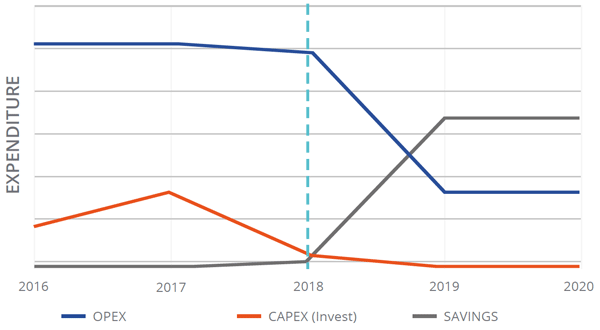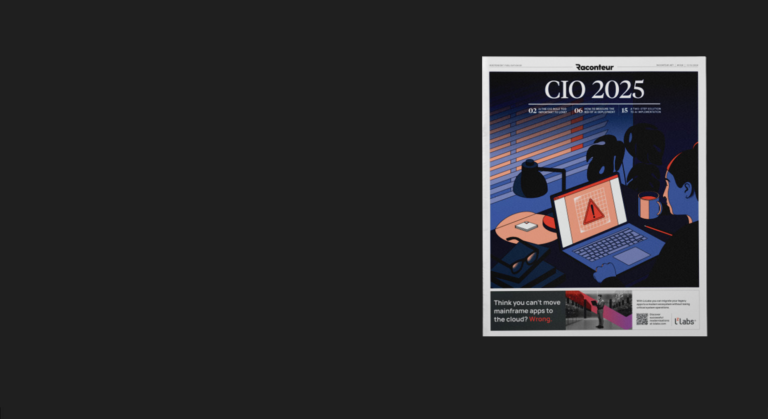Tipping point:
noun [ S or U]
/ˈtɪp.ɪŋ ˌpɔɪnt/
The time at which a change or an effect cannot be stopped
Most IT leaders understand they must migrate away from legacy technologies before they reach a “tipping point” where inertia and declining support for these platforms present a genuine threat to business continuity. However, many leaders struggle to determine an exact business case for migration away from their mainframe. In our experience, four core factors should be considered if a business is to understand whether procrastination may indeed harm their business, and in what timeframe:
- Modernization efforts – typically the driving force behind a migration – what are the material benefits to the business of moving critical applications to modern environments, and then modernizing the applications themselves?
- Platform lock in – what is the total cost of ownership for both software and hardware, when is the renewal date and what is the comparative cost of alternatives?
- Capital expenditure vs. operational expenditure – what is the breakdown of legacy platform cost, what do replacements cost, and what is the potential return on investment?
- Resource management – who is responsible for the platform, what is the combined resource tenure, is there a succession plan in place, and is outsourcing a tenable option?
Modernization efforts
Before building a business case around cost, it is crucial to establish the real reason for migration away from a legacy platform. For the majority of our customers, greater agility and use of critical applications for product innovation are the driving force. This is certainly the case for a major European bank we’re currently working with, whose CIO sought to move core banking applications into an environment where they could be tested and deployed faster using containerization.
The return on investment for modernization is unique in each case, but there are a number of objective measures that can be used to quantify the likely return on investment of moving applications into modern environments. These include:
- Faster time to market for new products
- Reduction in time to get programmers productive
- Reduced lead time for recruiting programmers
- Fewer defects in deployed updates (ie shift – left testing)
- Shorter time to deployment for updates
- Shorter wait time for test environments
- Reduced cost of test environments
- Fewer programmer context switches
Platform lock in
Once modernization efforts are understood and quantified, the second item in a business case analysis should be the contract duration of the existing legacy platform. How long is left on the existing contract, what fee is attached and when should you involve procurement and purchasing teams?
The exact cost of licence renewal is dependent on the scale of an organization’s mainframe architecture. For example, organizations running a mainframe with less than 2,000 MIPS have costs/MIPS almost six times the cost of organizations running over 20,000 MIPS.
| Environment Size Installed MIPS | Small < 2,000 Installed MIPS | Medium 2,000-20,000 Installed MIPS | Large > 20,000 Installed MIPS |
| Average | $5,214 | $2,450 | $896 |
Source: Gartner IT Key Metrics Data (December 2017)
When calculating platform lock-in, therefore, companies like our customer Swisscom – running 2,500 MIPS – can formulate a strong business case for migration away from the mainframe based on cost. For companies with larger mainframe estates, a business case will typically revolve even more around incremental modernization and transformation of business processes.
OpEx vs. CapEx
Once platform lock in is understood, a business case for migration based on cost can be produced. A number of factors should be considered here, within both OpEx (sustaining status quo) and CapEx (migration) expenditure over the life of the project. These are as follows, with approximate percentages of the total spend, on the basis of a 2,500 MIPS estate:
| OpEx | CapEx |
| – Core mainframe software (40%) – ISV Software (10%) – Personnel (30%) – Hardware (12%) – Infrastructure and power (5%) – Other costs (3%) | – Migration licence – Migration services (either from vendor or systems integration partner) |
When combined to form a business case, and measured over a four-year period, the savings potential of a migration project is considerable. Swisscom’s own business case exhibited a cost saving of over 50% per annum, once migration was complete.

after migration to LzLabs Software Defined Mainframe®
Resource Management
Finally, managing the cultural change elements of migration is crucial when establishing a business case for migration. If managed effectively, mainframe specialist teams can be key in establishing parameters for success, relating to both technical and business elements of the project. Personnel cost is typically alleviated during any migration project, as demonstrated above, but managing the transition to a modern platform does require management attention and resource. This should be factored into any business decision around migration.


